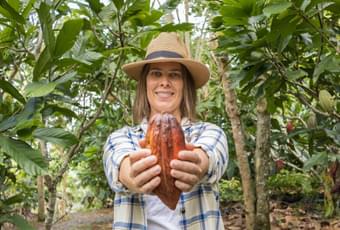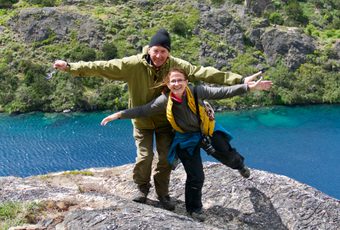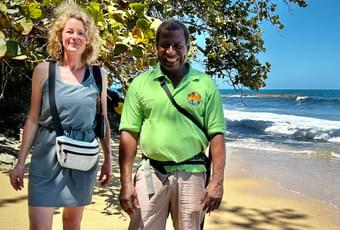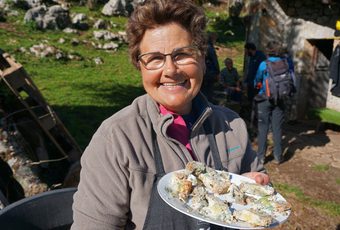Tasty treats: Our ultimate Azorean tasting menu
It might not be the first thing to spring to mind when you think of the Azores, but a visit to the archipelago holds in store a huge array of tasty treats for hungry travelers.
Stews cooked underground, exotic fruits plucked from orchard gardens and limpets harvested from the sea are washed down with a truly unique wine and the only tea and coffee grown, harvested and processed commercially in Europe.
The Azores are surprisingly self-sufficient in producing much of its own food and drink.
So, loosen your belt for a virtual tasting menu like no other...
Starter: cheese from São Jorge
On your travels you will see a lot of cows. Every island has its army of them and, from these, we get a range of produce. São Miguel provides a lot the archipelago’s milk. Terceira is famous for ice cream. São Jorge is a renowned producer of cheese, with its own Protected Denomination of Origin (and a roundabout dedicated to cheese), whilst Faial and Pico provide beef.
So let's start with a couple of slices of slightly spicy and tangy São Jorge cheese. Aged for a minimum of three months - sometimes up to a year or more - the cheese develops complex flavors with age, ranging from mild and buttery to sharper, more piquant notes as it matures.
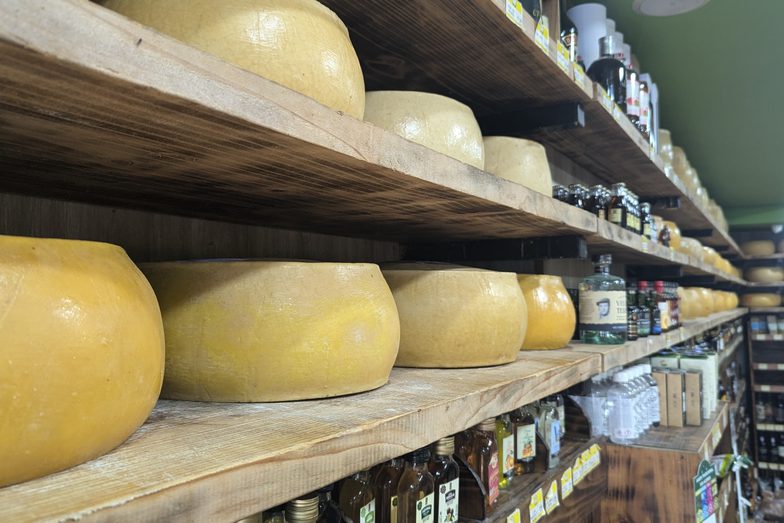
Seafood course: Limpets from São Jorge
Although it is surrounded by ocean, the Azores are not so synonymous with seafood. You can certainly enjoy superb fish across the archipelago, including a number of very good restaurants which specialize in it (Bar Caloura being one fine example). But fish are not caught on any great scale here, simply because the conditions in the sea are more geared towards greater variety than scale.
The seabed drops away quickly from the land, creating a number of different ecosystems at the different levels, but not areas of great volume of fish. This is why there are not a great many traditional fishing villages in the Azores. The one species that is starting to be caught more often is tuna, as fishermen venture further out into the ocean.
The one real exception to this rule is the limpets - or lapas as they are known locally - of São Jorge.
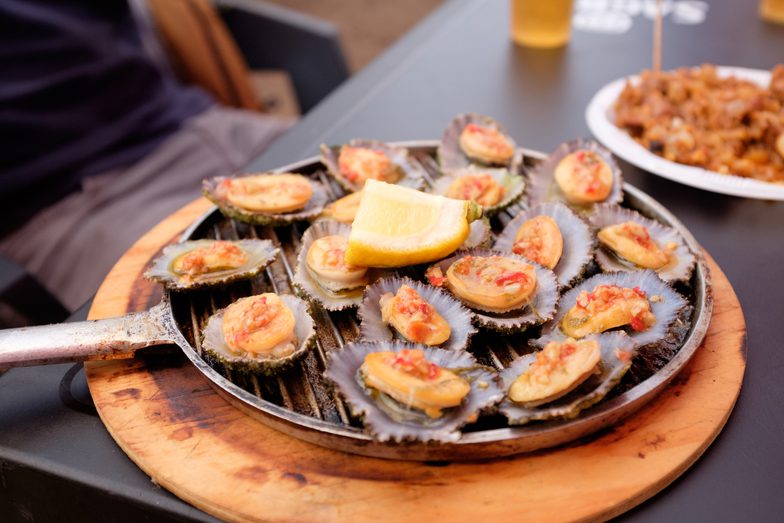
Generally, they are best experienced on the northern coast of São Jorge. This is where they come from. The cost of a portion of lapas depends on the season and demand. In the summer, it can cost €75-100 for a kilo, most of which is the shell. So you will need to order something else to go with it to fill you up. Or a new mortgage for your house. In the winter, prices are more around the €60-70 mark and more places offer 1/3 portions.
One idea is to order one portion and share them. But this is a virtual feast, so we're having our own!
Wine: a chilled white from Pico
The Azores is home to one of western Europe’s most distinctive wine regions.
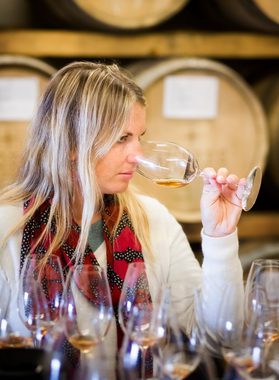
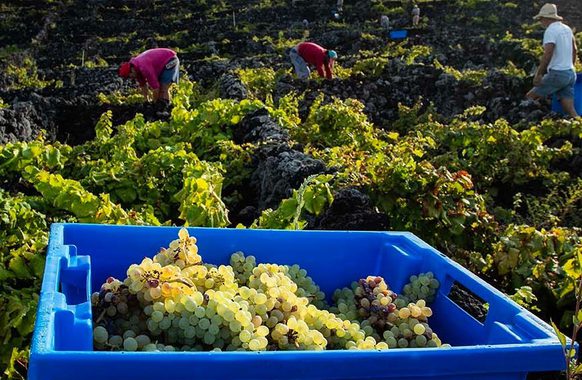
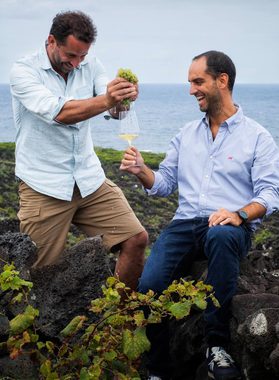
Back in olden times, Thomas Jeferson remarked on its quality and, most famously, it was a favored tipple of Russian czars. The story goes that, when the offices of Czar Nicholas II were ransacked at the start of the Russian Revolution in 1917, bottles of Pico wine were found in his private cellar. Over a hundred years later, it is a good marketing ploy to help sell the island’s most prized product, the €45-a-glass Czar wine.
So we'll have one of those please.
The island of Pico has a number of other small wineries which grow their vines on the lower slopes of Portugal’s highest mountain. Because the soil layer is so shallow, the vines send their roots deep into the lava rock, imparting a saltiness and minerality that are the hallmarks of Pico wine.
It really does taste of the sea, but in a good way!
Main: Cozido from São Miguel
The most famous meat dish in the archipelago is the cozido, unique to São Miguel.
Meat, sausages, potatoes and vegetables are layered in a large pot, which is then buried in volcanic soil near Furnas’ hot springs. The dish is slow-cooked for several hours by the natural steam rising from underground.
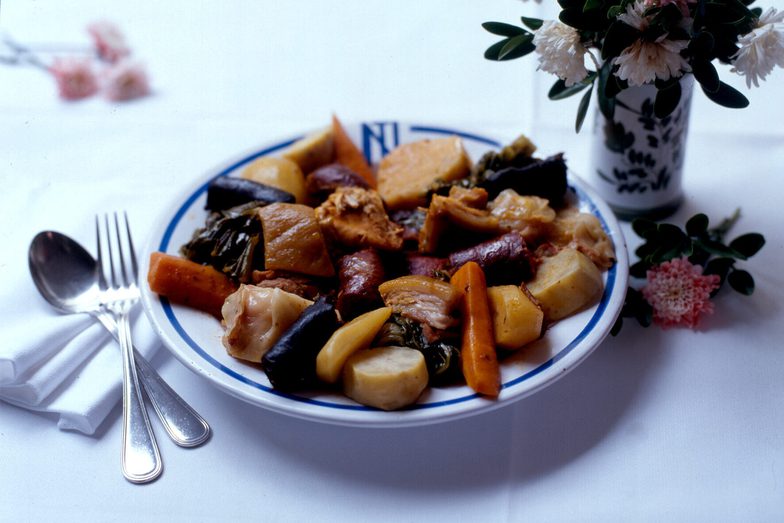
In truth, it isn’t the most delicate - and certainly not the healthiest! - thing you’ll eat on your travels, but it can be great fun seeing them hoik the pots out of the steaming subterranean ovens if you are at the fumaroles around midday.
You’ll see little mounds of earth with signs denoting which restaurant from the village the plot belongs to. Furnas is also the spiritual home of the tasty bolos lêvedos sweet breads.
Craft beer from São Miguel
Wine glasses away.
Craft beer enthusiasts will be pleased to know there is a burgeoning scene on São Miguel, with a couple of microbreweries selling directly to thirsty consumers on a little ‘Parque Industrial’ just outside Ribeira Grande.
Saúde!

Dessert: Terceira ice cream with fruit
For dessert, it has to be ice cream and in the Azores, it has to come from Terceira. But we need some fruit to go with it...
If there is one fruit the Azores tourism office loves to associate with the archipelago, it’s the pineapple.
In truth, these plantations are a bit of a novelty for tourists – local people don’t actually grow them on the island. The only place you’ll see them growing in any sort of scale are in a few plantations just outside Ponta Delgada in São Miguel, usually in upscale hotels which had the clever idea of sticking a hot tub in the middle of the humid greenhouses.
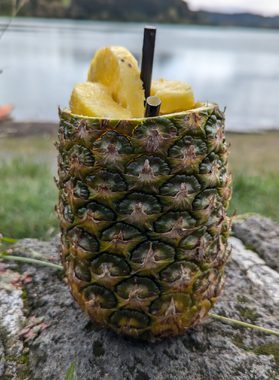
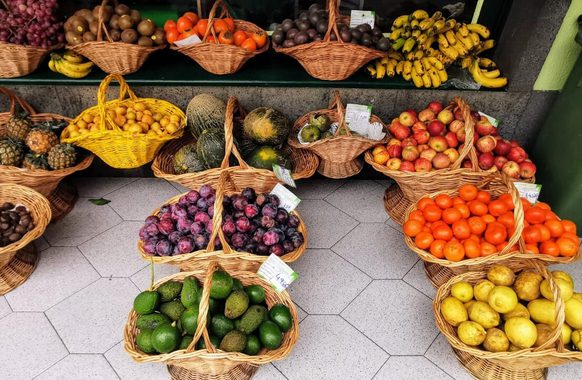
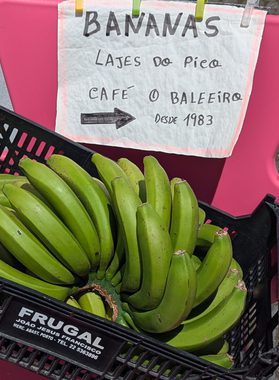
When you are exploring the coastal areas of Pico, Faial and São Jorge, you’ll see that it is much more common for locals to grow figs, bananas, apples, oranges, kiwis and passion fruit. The more adventurous will have a go at papaya and mango.
This sort of produce is much more authentic and traditional for the Azores. It will be on your breakfast table, and feature in many restaurant dishes.
Food distance here is measured in meters, not miles.
Coffee from São Jorge
São Jorge is said to be the only place in Western Europe to cultivate, process and serve coffee in the same place. Incredible, really - who'd have thought it?
The coffee bean arrived in the Azores from Brazil many moons ago. Unusually, it is grown close to sea level, where it has the right mix of humidity from the lava of the fajã and cooling air from the mountains to thrive. Like the wine of Picos, the soil imparts a subtle saltiness to the flavor.

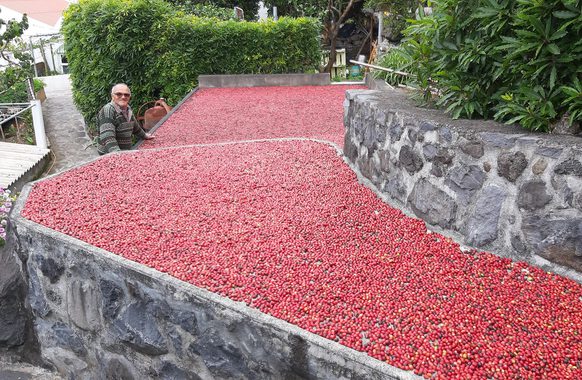
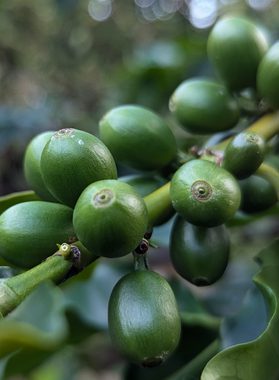
Unlike the tea plantations of São Miguel, this is not a practiced industry of a hundred years and more with factories and production lines and brands. It is a cottage industry.
The coffee is best served as an espresso and enjoyed with a little especie cinnamon sweet treat, made from leftovers from bread baking.
A generous tip
With the bill, comes a generous tip... Don't just sit here salivating and looking at the clock to see if it's lunchtime yet. Food tastes much better in the real world. Come and experience it for yourself.
The saltiness of the wine, the nutiness of the cheese and the er... aroma of those underground sulphur ovens all need to be experienced in the Azores, on your plate and in your glass.
We have some wonderful restaurant recommendations to share, and lots of guidance on how to visit the tea plantations, or see the cozido stews being cooked. Food and drink are not just fuel on the Azores, they're a huge part of the fun.
Come and enjoy the flavors with us...

